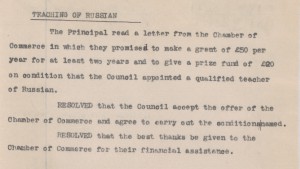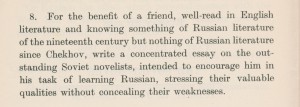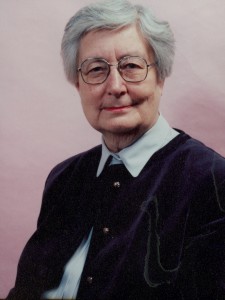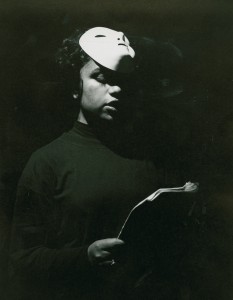May 19, 2016, by Kathryn Steenson
Happy Anniversary, Russian & Slavonic Studies!
Did you know that Russian has been taught at Nottingham for 100 years? The academic year 1915/16 saw the very first students enrolled on Russian language courses at what was then University College Nottingham. It began with one member of staff on a temporary contract to try to encourage the study of Russian, and led to the founding of one of the oldest Slavonic studies departments in the UK.
Russian teaching was either borne out of the requirements of WWI or from the potential expansion of Nottingham’s lace and hosiery industry into Russian markets. This latter explanation seems more likely, as it was the Chamber of Commerce who agreed to provide a small sum of money for two years to pay for a lecturer.
Basil Slepchenko, from what is now the Russian city of Krasnodar accepted the post teaching Russian at Nottingham University College. He left after the two years and Dr Janko Lavrin was appointed lecturer, eventually rising to become the first head of the Russian and Slavonic Studies Department on its creation in 1933.
From 1915 until UCN was granted University status in 1948, only one BA and two PhDs were awarded in Russian, but this doesn’t reflect the true number of students taking the courses who were from other departments. The courses on offer must have appealed to enough students that they continued to run despite few taking an entire Single Honours degree in Russian.
The popularity of the department really took off after WWII. In twenty years, student numbers rose from about 4 per year in 1950 to 70 in 1970. More staff were appointed and the department expanded to include more teaching of Russian and Slavonic culture, literature and history, as well as the languages.
The numbers of students in the Department has always fluctuated, in part due to the limited number of schools teaching it, and so developed a strong research programme alongside teaching. Considering the difficulties posed by the Cold War, the department forged close links with academics and institutions from the Soviet Union and Eastern Europe. Much of this was the result of the work of Dr Monica Partidge, who was also the first woman at the University of Nottingham to be appointed to a Chair and Head of Department.
To mark their milestone, the Department has created an online gallery of images from the last 100 years, which can be viewed here, as well as a 4 minute video of former staff and students talking about the Department.
More information about the University’s archives is available from Manuscripts & Special Collections, where the papers of both Professors Partridge and Lavrin are also held.
For more information about studying Russian and related courses at The University of Nottingham, please visit the Department of Russian and Slavonic Studies.
No comments yet, fill out a comment to be the first







Leave a Reply